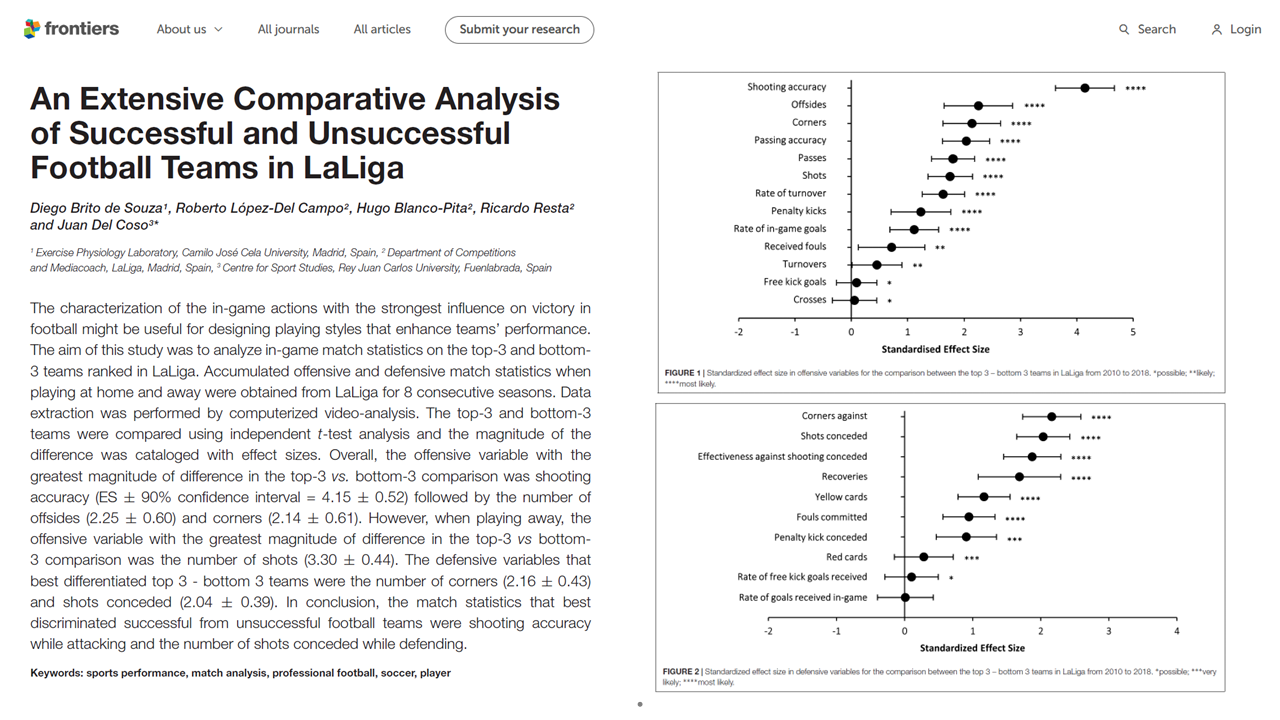
08 Nov An Extensive Comparative Analysis of Successful and Unsuccessful Football Teams in LaLiga
Practical Summary for Coaches, Analysts, and Performance Staff
What really separates top LaLiga teams from those struggling at the bottom? After analyzing 8 full seasons of LaLiga data (2010–2018), this study identifies the performance indicators that consistently define success on the pitch — and the insights are anything but trivial.
The clearest offensive difference is shooting accuracy. Top 3 teams consistently finished with twice the effectiveness in front of goal compared to bottom 3 teams. This wasn’t about taking more shots — although they did — but rather about converting those chances with precision. This suggests that training drills focused on shooting under pressure, from realistic match contexts, should be prioritized.
When playing away, total shots had even greater weight. This means that creating chances in difficult contexts (hostile environments, tighter spaces) is a key trait of high-performing teams.
Other offensive markers that stood out: number of offsides and corners. These may seem secondary, but they indicate a vertical, aggressive style of play that challenges the defensive line — a consistent feature of winning teams.
On the defensive side, conceded corners and shots were the biggest red flags. Top teams limited rivals’ offensive momentum more effectively, reducing exposure to dangerous situations. Drills focused on defensive structure and pressing to recover the ball before the opponent reaches your box are practical takeaways.
Interestingly, these patterns held true regardless of playing home or away, suggesting that successful teams stick to their identity — aggressive in attack, disciplined in defense — no matter the setting.
Practical Applications for First-Team Staff:
- Emphasize high-quality shooting training, not just volume.
- Design fast-attack drills with a small number of passes and goal-scoring as the objective.
- Train off-the-ball runs to beat defensive lines and generate offsides or corners.
- Reduce defensive exposure by working on early recovery, structured pressing, and corner defense.
- Maintain a consistent playing identity home and away — don’t adapt just to survive; prepare to dominate.
Full article DOI: https://doi.org/10.3389/fpsyg.2019.02566


